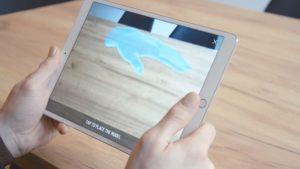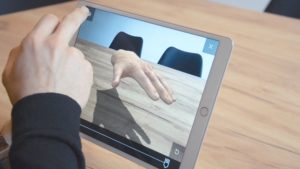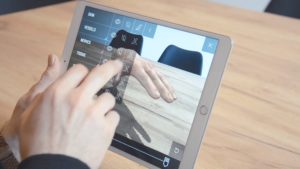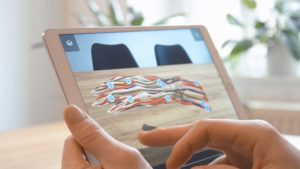Augmented reality is one of the rising trends in healthcare. However, just as every breakthrough technology, before its widespread adoption, it has to go through an experimental phase, during which new ways of use are discovered and the technology is perfected. For the best results, close cooperation between the tech industry and healthcare professionals is essential. It can benefit both parties: tech companies can receive valuable feedback and get to know the point of view of end-users, and medical personnel can take advantage of the innovations in their daily work.
Apptension has experienced the many benefits of this approach to MedTech product development themselves, during the creation of an experimental augmented reality app aimed for hand surgeons.
Coming up with the idea
Having in mind the growing importance of AR technology in healthcare, Apptension’s research & development team was looking for a way to develop a product that would improve this industry (or at least a part of it). Why healthcare? In a nutshell, they realized that it’s a crucial aspect that affects lives all around the world, and can greatly improve the quality of life of millions.
Maybe they won’t cure cancer in a few weeks, but they can still make a difference for healthcare professionals and their patients at some point, they thought.

The idea itself came from Apptension’s CEO, who learned from a healthcare professional that an AR app could be of great help in hand surgeries, in particular as learning material. Due to their practical approach to product development based on customer research, they knew that working on the solution for the sake of a pure experiment, without end-user feedback wasn’t an option. They wanted to create an app that would be a real helping hand (pun intended!) for doctors, and they knew that only collaborating directly with healthcare professionals they could ensure that their app responds to their needs and is of real value. That’s why Apptension teamed up with a hand surgeon that supported them along the way, testing the solution, giving feedback, evaluating their work and suggesting improvements.

Augmented reality healthcare app development step by step
Although this project was focused more on research than on creating a specific solution for a client, Apptension followed their usual product design process. They started with creating a scaffold app with most of the basic AR functionalities embedded. This way, they created the primary version of the application that they could consult with end-users and keep enhancing it thanks to the feedback. They organized review meetings in order to evaluate the outcome of the initial stages of the project, gathered valuable observations from the hand surgeon they collaborated with and then put his suggestions into use, creating a roadmap for their MVP. To make their work more time-efficient, they decided to set a non-extendable deadline for the MVP and iterated the functionalities until this specific target date.
This allowed Apptension to plan their work better and to use that time wisely, without wasting it on too complex or fancy functionalities.

Choosing the tech stack for augmented reality app development
The technology that plays a crucial role in Apptension’s augmented reality surgery app is the Unity’s AR Foundation framework which helped them build both iOS and Android applications, using ARKit and AR Core platforms, respectively. Thanks to this framework they were able to make sure they support both operating systems, which was quite a demanding task due to completely different approaches to AR.
Choosing an adequate hand tracking framework was actually one of the major challenges Apptension had to face during the development phase. They also considered using Google’s MediaPipe hand tracking library: a cross-platform framework based on machine learning. However, although it works great for purposes such as understanding sign language, it turned out to be still in an early development stage and wasn’t sufficient for their project in terms of performance, which would negatively impact user experience, and it didn’t integrate well with the app they’ve developed so far.

Another hand tracking library that Apptension evaluated was Manomotion, but its pricing scheme that they considered too complicated for their purposes stopped them from evaluating it further. Eventually, the feedback gathered from end-users made them realize that the quality of hand tracking and animations should not be the primary concern: it turned out that a good user experience achieved with the current AR technologies was way more important.
Besides the issues with hand tracking, Apptension also faced a challenge with finding an anatomically accurate human hand model. After evaluating their options, they chose to purchase one, but even so, they had to spend more time than expected trying to make sure it renders correctly and nicely inside their app.

The outcome? A fully functioning augmented reality surgery app!
After all the hard work, Apptension finally managed to deliver a fully functioning MVP within the expected deadline. The application can be a convenient learning material for doctors in practice or even experienced surgeons and support their work. Now they are looking forward to keep collecting more feedback from end-users and continue improving their MVP by implementing new features.
Apptension’s highly hands-on and user-oriented approach to AR healthcare app development proved to bring value to medical professionals because it ensures achieving the product-market fit and creating a solution that truly makes a difference for doctors and patients.
STUDIO: Apptension


